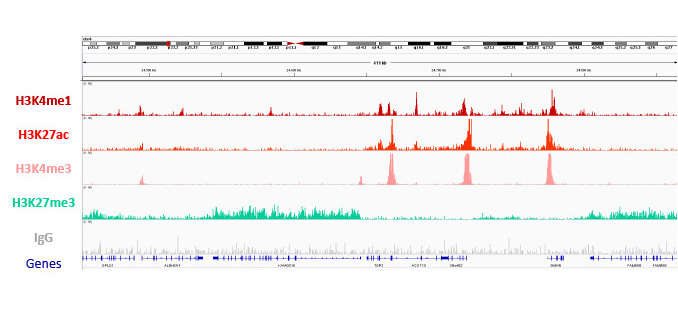We were very happy with the method. It gave good results in the end, and required much smaller samples than we need to reliably perform conventional ChIP-seq.
In our view, the main advantages of the ChIPmentation kit compared to our conventional ChIP-seq protocol are (most important first):
- smaller sample requirement,
- simpler workflow with less that can go wrong,
- slightly higher resolution and signal: noise ratio.
ChIPmentation sequencing profiles for p65. Chromatin preparation and immunoprecipitation have been performed on stimulated NIH3T3 cells using the iDeal ChIP-seq kit for TFs (Cat. No. C01010055). Chromatin from 4,000,000 cells was used for the immunoprecipitation in combination with either anti-p65 antibody or IgG. The library preparation was performed with the TAG Kit for ChIPmentation (Cat. No. C01011030) and 24 SI for ChIPmentation (Cat. No. C01011031).
-
产品
剪切技术
Tagmentation
Chromatin studies
DNA methylation
- Bisulfite conversion
- Methylated DNA Immunoprecipitation
- Methylbinding domain protein
- Hydroxymethylated DNA Immunoprecipitation
Genome editing (CRISPR/Cas9)
Antibodies
- All antibodies
- Sample size antibodies
- ChIP-seq grade antibodies
- ChIP-grade antibodies
- Western Blot Antibodies
- DNA modifications
- RNA modifications
- CRISPR/Cas9 antibodies
- CUT&Tag Antibodies
NGS Library preparation
- Library preparation for ChIP-seq
- Library preparation for RNA sequencing
- Library preparation for DNA sequencing
Automation
Reagents
- 服务
- 研究领域
- 资源
- 公司
-
联系人






